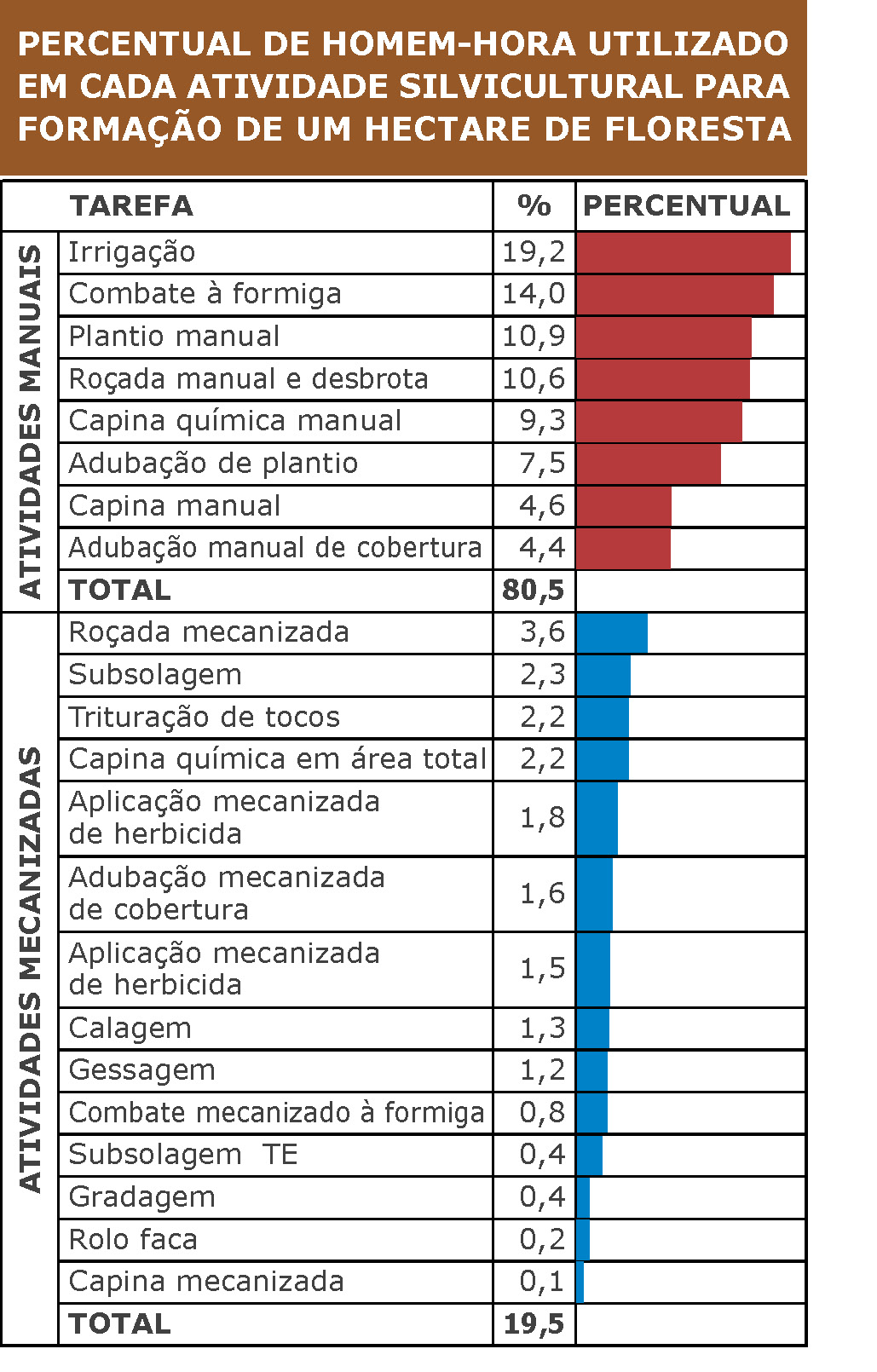Bernardo Alves Pereira
Research and Forest Management Manager at Vallourec Florestal
OpCP69
The development of mechanization of silvicultural activitiess
Currently, the Brazilian forestry market is heated. Despite the pandemic scenario, projects and expansions continue to develop in the country and promise major changes to increase the dynamics of the forestry sector. According to the Brazilian Tree Industry, the companies are betting on new facilities and the expansion of factories, thus generating an increase in their forest plantation areas.
The expansions of these companies have impacted the scenario of the forestry market in Brazil. This generates a great need for manpower, which is scarcer every day, making it a challenge to hire new employees. Many rural jobs have technological limitations and a low level of mechanization. This contributes to the lack of interest of young people to work in this sector. Thus, it is urgent to introduce operational development strategies, involving more technologies and improvement of the conditions of work posts, such as mechanization and automation of forestry processes.
 The mechanization of forest harvesting is recent in our country, since from the 1990s onwards, high-tech machines were imported into this area. This has brought benefits, such as increased productivity, improved working conditions and reduced costs.
The mechanization of forest harvesting is recent in our country, since from the 1990s onwards, high-tech machines were imported into this area. This has brought benefits, such as increased productivity, improved working conditions and reduced costs.
Today, there is a great evolution in equipment with cutting-edge technology, such as Feller, Havesters, Skidders, Forwarder, among others. They are increasingly modern and productive equipment, which provide safer, more profitable and more attractive work for young people who seek their personal and professional development.
The machines have embedded technology, with telemetry systems that are automatically sent remotely to the manager, keeping him informed about the location, engine hours, productivity, fuel consumption, preventive maintenance plans, among other resources that contribute to the management of availability, performance and production costs associated with machinery.
Forestry, on the other hand, has a lot to evolve with regard to mechanization, since, until now, tractors and other agricultural machines are adapted for this area of the Brazilian forestry sector.
However, revolutionary alternatives appear in the national market, bringing technological improvements significant to the segment. However, most of these technologies are not yet adapted to the areas of renovation, not reaching the same quality, productivity and cost when compared to activities carried out manually.
The highlighted graph shows the percentage of man-hours used in each silvicultural activity to form one hectare of forest during two rotations (14 years). It is observed that, of the 22 activities carried out, 14 activities are mechanized and represent only 19.5% of these hours.
On the other hand, the smallest part of the activities, that is, eight, are carried out manually and correspond to 80.5% of the hours. Of all the activities, the ones that most require labor are irrigation (19.2%), combating ants (14%) and planting (10.9%). It is evident, in the sector, a great movement around the mechanization of irrigation and planting activities, and this will contribute to a significant evolution in the level of mechanization of forestry.
However, at the same time, it is up to companies to invest in the qualification of the surrounding communities so that the manpower to operate these new equipment is extracted from them and also to invest more in development, opening the doors to startups, approaching universities and of thematic groups focusing on the mechanization of the area.
Thus, by joining forces, the new technologies will be directed and adapted to the different silvicultural conditions in the country. The shortage of skilled labor represents, today, an important challenge to the plans for the growth of the forestry industry. Expanding the development of mechanization of forestry activities becomes strategic, so that, in the near future, we can continue managing forests and guaranteeing a more attractive environment for young people to enter rural forestry work.




